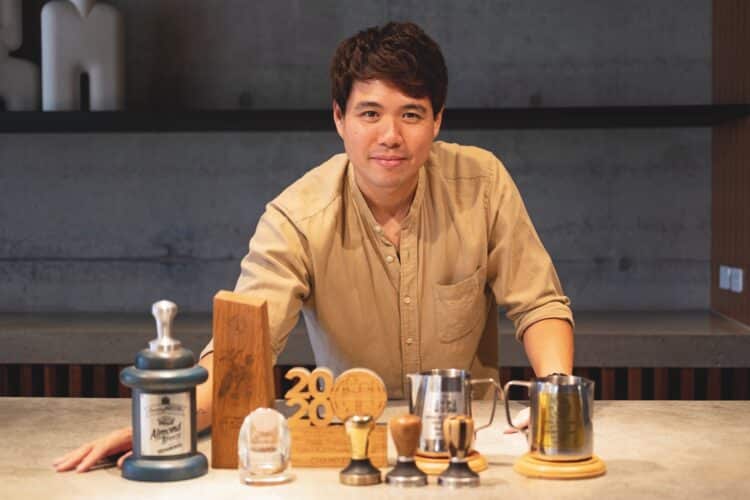The three-time ASCA Western Region Latte Art Champion reflects on his love of coffee education, Perth’s evolving café community, and opening a coffee studio with his fiancée.
How did you start your career in coffee?
I started at a very young age, initially part-time at Geláre while I was at university. After I graduated, I moved into graphic design, but I had just competed in my first latte art competition and came in second place. I loved being involved in the competitions, so I kept doing it for the next seven years.
In 2017, the Western Region Latte Art Championship merged with South Australia so I had to take the big step of flying to Adelaide, but I won and that changed my career. This contributed to my decision to pursue coffee full time.
It was great to be so heavily involved in that scene, but since COVID I’ve looked more to the coffee training space. I’m also involved in the competition judging scene.
What inspired you to pursue latte art competitively?
I really love coffee, but I feel like it is often explained in a complicated way. I’ve always liked to learn in a simpler style, and latte art is great for that because it’s visual – you can see what’s happening and you don’t need to talk about different sensory aspects.
When we’re at competitions we’re not necessarily speaking about how the coffee is processed, how it tastes, or those kinds of things. Whether you’re in Adelaide, Melbourne, Sydney, or anywhere else, latte art is its own language that makes it easy to connect with other people that share the passion for it.
What motivated you to open Andune Coffee Studio?
I had always wanted to build a coffee bar, but none of this would have happened without my fiancée June. We moved quickly when we found the space – we started talking about it in April and opened in August. We definitely didn’t want to be a café: we wanted to focus more on training and allowing people to really connect with coffee.
We have seen a lot of people, both baristas and non-baristas, who are really introverted, but having a space like this allows them to open up and understand coffee. It’s easy to fall into speaking about coffee in that complicated way, but sometimes the audience is trying something new for the first time and needs to be guided through the experience.
Having a space that isn’t overly crowded because it isn’t a normal café gives people the time and ability to ask questions they might think are simple or silly. That’s really important, because that’s where some of the best learning happens.
What equipment do you use in your training workshops?
We designed a long bar table and then a space for people to crowd around the machines. We have two machines – a two-group Crem EX3, which anyone in the coffee industry will probably be able to afford for most of their coffee-shop needs, and a La Marzocco Linea Classic S, which is for the people who want to explore their coffee a little bit more. We have a filter brewing bar with a Mazzer ZM grinder too.
Now you have opened your coffee studio, what’s next?
The most rewarding part of this process has been seeing the space evolve. We’ve had so much positive feedback from customers and baristas, and seeing all those smiling faces makes our day.
I’ve just come back from Melbourne with some really cool beans – from Code Black Coffee, Manta Ray, and ACoffee – that have been uniquely processed so the coffee is super vibrant. I’ve also ordered some Sudan Rume competition-grade coffee.
We’re excited to test different themes around coffee and build a real community connection, because Perth’s coffee community is still quite small but it is very passionate and growing quickly.
This article appears in the October 2025 edition of BeanScene. Subscribe HERE.




